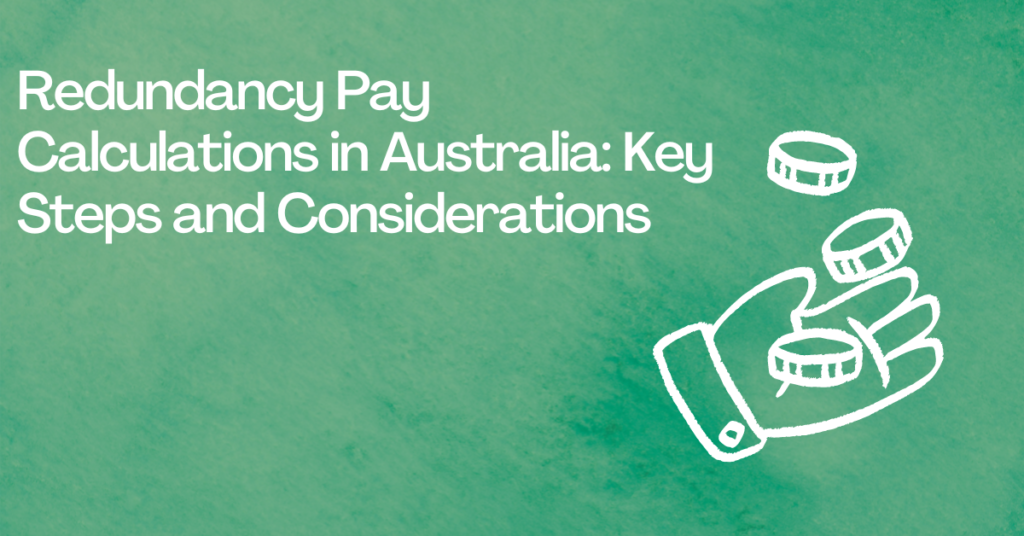When your business is struggling financially or changing its operations, you might need to make some roles redundant. This means those jobs are no longer needed, which can be costly and legally tricky. This guide will help you understand what redundancy is, how to calculate redundancy pay, and when employees aren’t entitled to it. By following these steps, you can handle redundancy fairly and avoid legal problems.
What is Redundancy?
Redundancy occurs when a job is no longer needed due to changes in the business, not because of the employee’s performance. Common reasons include:
- Economic Downturns: Reduced business performance due to poor economic conditions.
- Technological Changes: New technologies or processes that replace certain roles.
- Business Strategy Changes: Shifting business models, like moving from physical stores to online sales.
Genuine Redundancy
Redundancy is genuine if:
- Role Elimination: The role is truly no longer needed.
- Consultation Compliance: The business meets consultation requirements outlined in relevant awards or agreements.
- Redeployment Efforts: The business tries to find other suitable roles for the employee within the company or related entities.

Defending Against Legal Claims
To avoid unfair dismissal claims
- There must be valid reason for the termination.
- The employee is treated fairly during the redundancy process.
Keeping detailed records of the steps taken to make a role redundant can help protect the business if an employee takes legal action.
Calculating Redundancy Pay
Employees with more than one year of continuous service (excluding casuals) are entitled to redundancy pay under the National Employment Standards (NES). The amount depends on their length of service and base rate of pay.
Redundancy Pay=Base Rate of Pay×Redundancy Pay Period
The Base Rate of Pay is the regular pay rate for ordinary hours, excluding bonuses, allowances, overtime, and penalties.
Redundancy Pay Periods:
- 1-2 years: 4 weeks
- 2-3 years: 6 weeks
- 3-4 years: 7 weeks
- 4-5 years: 8 weeks
- 5-6 years: 10 weeks
- 6-7 years: 11 weeks
- 7-8 years: 13 weeks
- 8-9 years: 14 weeks
- 9-10 years: 16 weeks
- 10+ years: 12 weeks (plus long service leave entitlements)
Employees Not Entitled to Redundancy Pay
- Casual employees.
- Employees on fixed-term contracts.
- Employees dismissed for serious misconduct.
Redeployment
If a business offers a redundant employee a different role within the company or its related entities and they accept, they are not entitled to redundancy pay.
Small Business Exemption
Small businesses with fewer than 15 employees are exempt from paying redundancy entitlements. This count includes employees being made redundant.
Business Transfer
When selling a business, if the new owner does not retain certain employees, the original business may need to pay redundancy entitlements. If the new owner offers similar terms and the employees refuse, redundancy pay may not be required.
Inability to Pay
If a business cannot afford redundancy payments due to financial difficulties, it can apply to the Fair Work Commission to reduce the amount owed.
Final Thoughts
Redundancy can be a challenging process, but understanding it can help you handle it better. Make sure the redundancy is genuine, calculate the correct pay, and know who is and isn’t entitled to it. Always follow legal guidelines, keep detailed records, and consider other roles for affected employees. If you need help, consult legal professionals to ensure you’re doing everything right. Handling redundancy properly can prevent legal issues and keep your business running smoothly.
